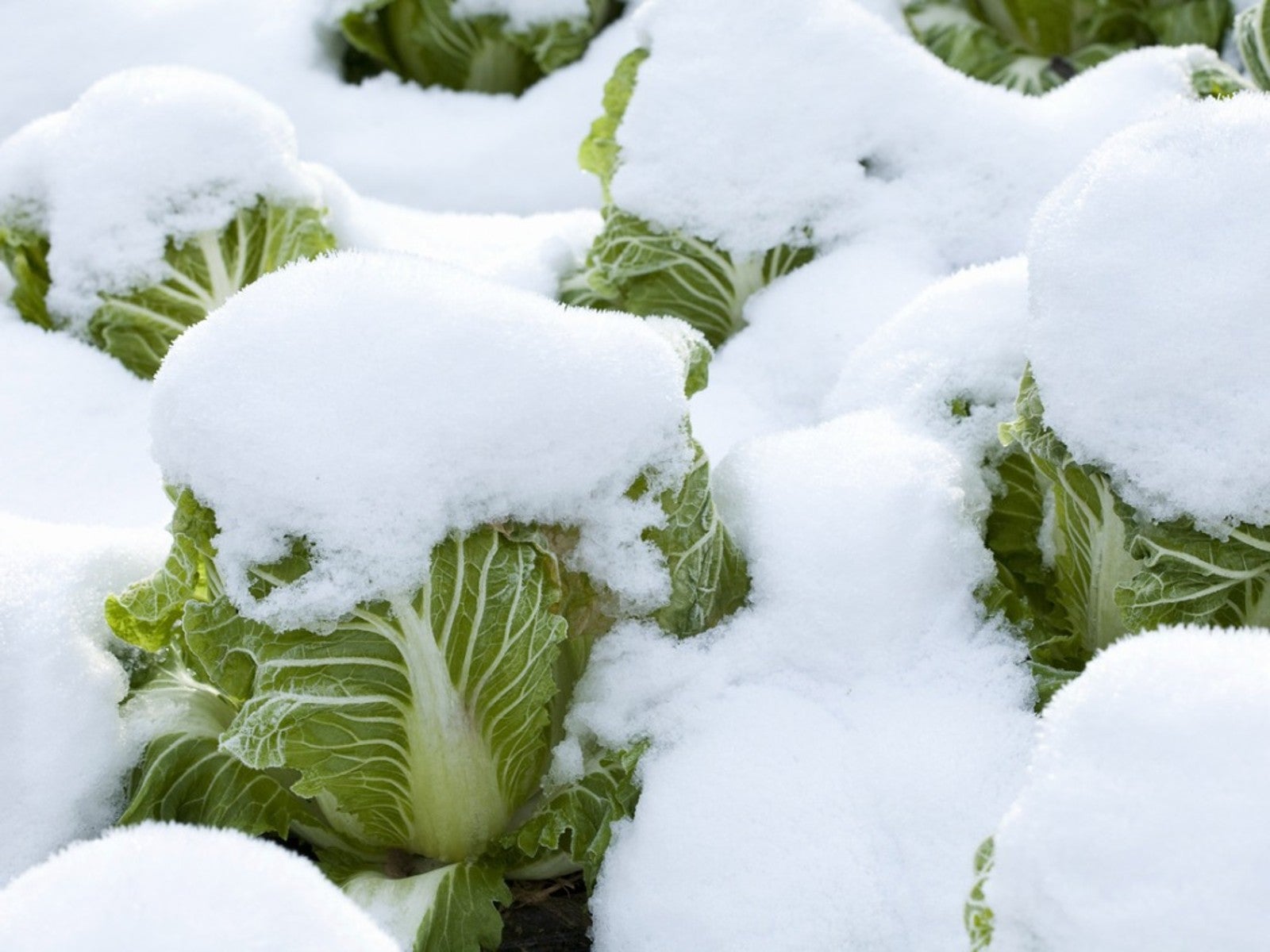Cold Hardy Vegetables: Tips And Techniques To Grow In The Snow


The snow is flying. The ground is frozen. It's obvious you can't garden in these conditions. Or can you? By utilizing techniques such as cold-frame gardening and learning what vegetables grow in snow, you can have a successful winter vegetable garden.
How to Grow Veggies in the Winter
Warmth and sunshine are the two must-haves for a successful winter garden. Cold-hardy vegetables can survive below-freezing temperatures overnight. But for these veggies to grow, they need a minimum of 40 degrees F. (4.4 C.) and approximately 6 hours of sunlight during the day.
Location determines the amount of sunlight your winter garden will recieve. When planting a winter vegetable garden in late summer or early fall, take into account that the days are shorter and the sun resides lower in the sky during the winter months. Choose the sunniest location and avoid areas where buildings and trees cast longer shadows in the winter.
To prevent the ground from freezing and retain warmth around the plants, protection from the elements is required. Row covers, hotbeds and cold-frame gardening methods are the least expensive options, with greenhouses being a bit pricier. In many areas, radiant heating from the sun will provide adequate warmth for growing winter-hardy crops in a shelter.
Consider these additional tips when learning how to grow veggies in the winter:
- Plant directly in the ground. The soil in containers and raised beds will freeze quicker.
- Mulch heavily to retain moisture and warmth.
- Keep soil moist. Water has insulating properties which help prevent plants from freezing.
- Use bricks, concrete pads or water barrels to absorb heat from the sun and release it at night.
Which Vegetables Will Grow in Snow-Prone Areas
Which structure you choose to protect your winter vegetable garden will have a bearing on what you can successfully grow. Low tunnels work best with crops like potatoes. These crops are planted in the fall, left to grow over the winter and harvested in the spring. Accessing low tunnels on cold winter days to harvest veggies will release retained heat.
Hotbeds utilize the same technique as cold-frame gardening, except a heat source is incorporated under the soil. Hotbeds can be used to start warm-weather plants in early spring and for growing fast-maturing veggies, like lettuce and radishes, during the winter.
Gardening tips, videos, info and more delivered right to your inbox!
Sign up for the Gardening Know How newsletter today and receive a free copy of our e-book "How to Grow Delicious Tomatoes".
By now, you may be wondering if warm-weather crops like tomatoes and peppers can be grown in a protected winter vegetable garden. The short answer is no. Without an additional source of heat and light, these types of veggies won't bloom and bear fruit during the winter.
Here is a list of veggies which can be grown in protected shelters when the snow is flying:

Laura Miller has been gardening all her life. Holding a degree in Biology, Nutrition, and Agriculture, Laura's area of expertise is vegetables, herbs, and all things edible. She lives in Ohio.
-
 12 Lush Alternatives To A Lawn For Sustainable Spaces
12 Lush Alternatives To A Lawn For Sustainable SpacesAlternatives to a lawn are beautiful and also beneficial to your local ecosystem and its pollinators. Explore our top picks for plants to replace grass.
By Tonya Barnett
-
 Types Of Tomatoes Explained: Explore The Many Wonderful Shapes, Colors, Flavors, & Best Uses
Types Of Tomatoes Explained: Explore The Many Wonderful Shapes, Colors, Flavors, & Best UsesThe world of tomato varieties is vast and fascinating. Learn about the key types to grow in your garden, tailored to your preferences and space.
By Amy Grant
-
 How Many Vegetables To Plant Per Person For A Year
How Many Vegetables To Plant Per Person For A YearGauging how much to plant in a vegetable garden can eliminate waste while still producing enough for your family. Click for more.
By Bonnie L. Grant
-
 13 Perennial Fruits And Vegetables You Only Have To Plant Once
13 Perennial Fruits And Vegetables You Only Have To Plant OnceLooking to set it and forget it? Find out which fruits and vegetables can be grown as perennials.
By Laura Miller
-
 11 Edible Plants For A Year-Round Garden In A Bucket
11 Edible Plants For A Year-Round Garden In A BucketWant to know how to grow food inside your house and which foods do best indoors? Click here to learn all about it.
By Bonnie L. Grant
-
 Frost Tolerance Of Vegetables From Least To Most Hardy
Frost Tolerance Of Vegetables From Least To Most HardyHow cold can vegetables tolerate? Knowing which veggies will survive frosts and freezes is essential for the success of your garden. Click here for more.
By Laura Miller
-
 Best Vegetables To Pickle Straight From The Garden
Best Vegetables To Pickle Straight From The GardenPickles aren’t limited to just cucumbers. Read on for tips on pickling your fresh veggies.
By Amy Grant
-
 Benefits Of Planting In Fall Vs. Spring Vegetable Plots
Benefits Of Planting In Fall Vs. Spring Vegetable PlotsLearn why some vegetables do better if you plant them in fall instead of spring.
By Laura Miller
-
 Interplanting Vegetables In The Fall Garden
Interplanting Vegetables In The Fall GardenLearn all about the benefits of interplanting vegetables for your fall garden.
By Laura Miller
-
 Best Vegetables For Growing In Perlite
Best Vegetables For Growing In PerlitePerlite is a natural growing medium that comes from super-heated volcanic glass. In some cases, it works better than soil. Read on for more info.
By Laura Miller